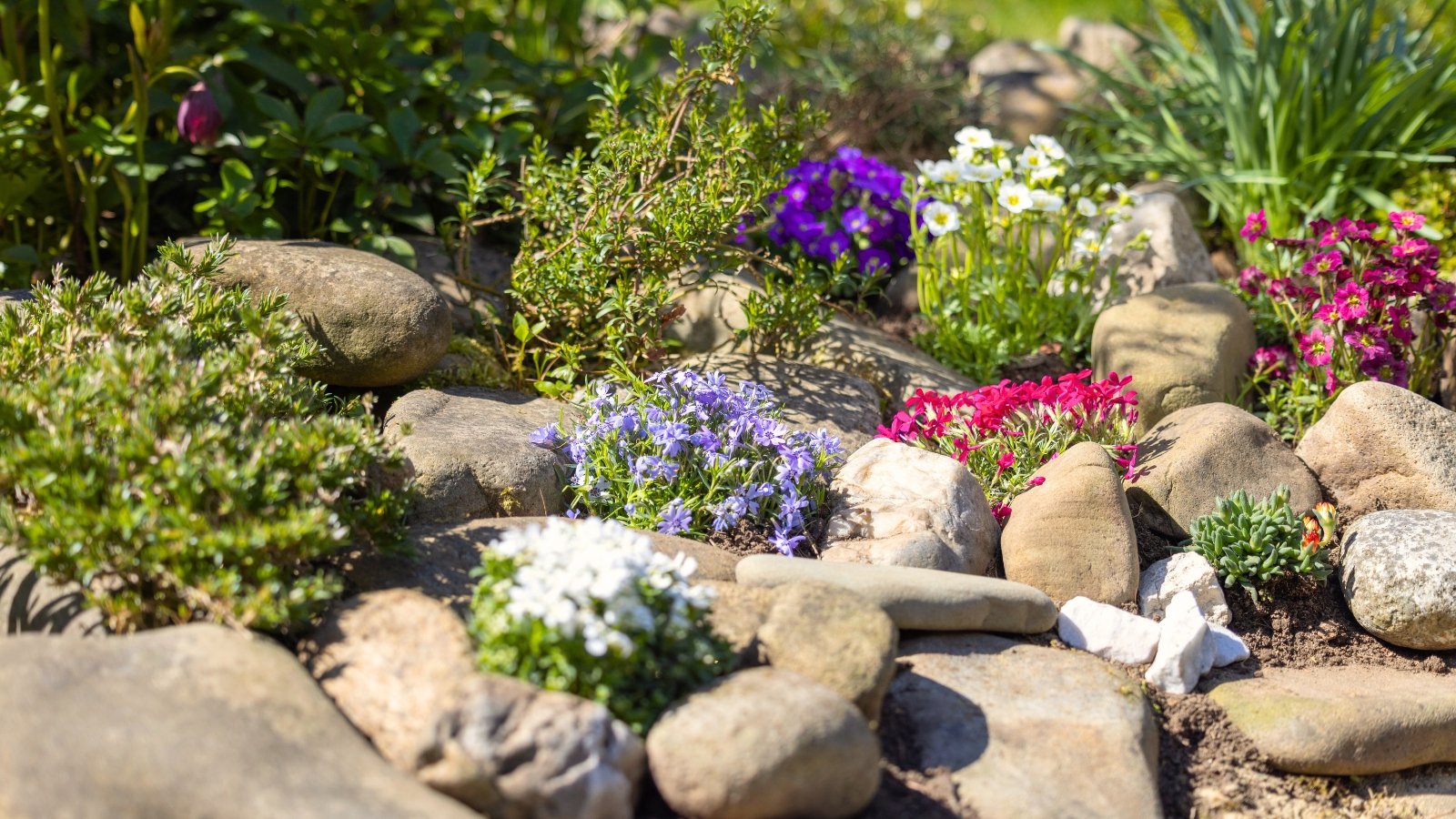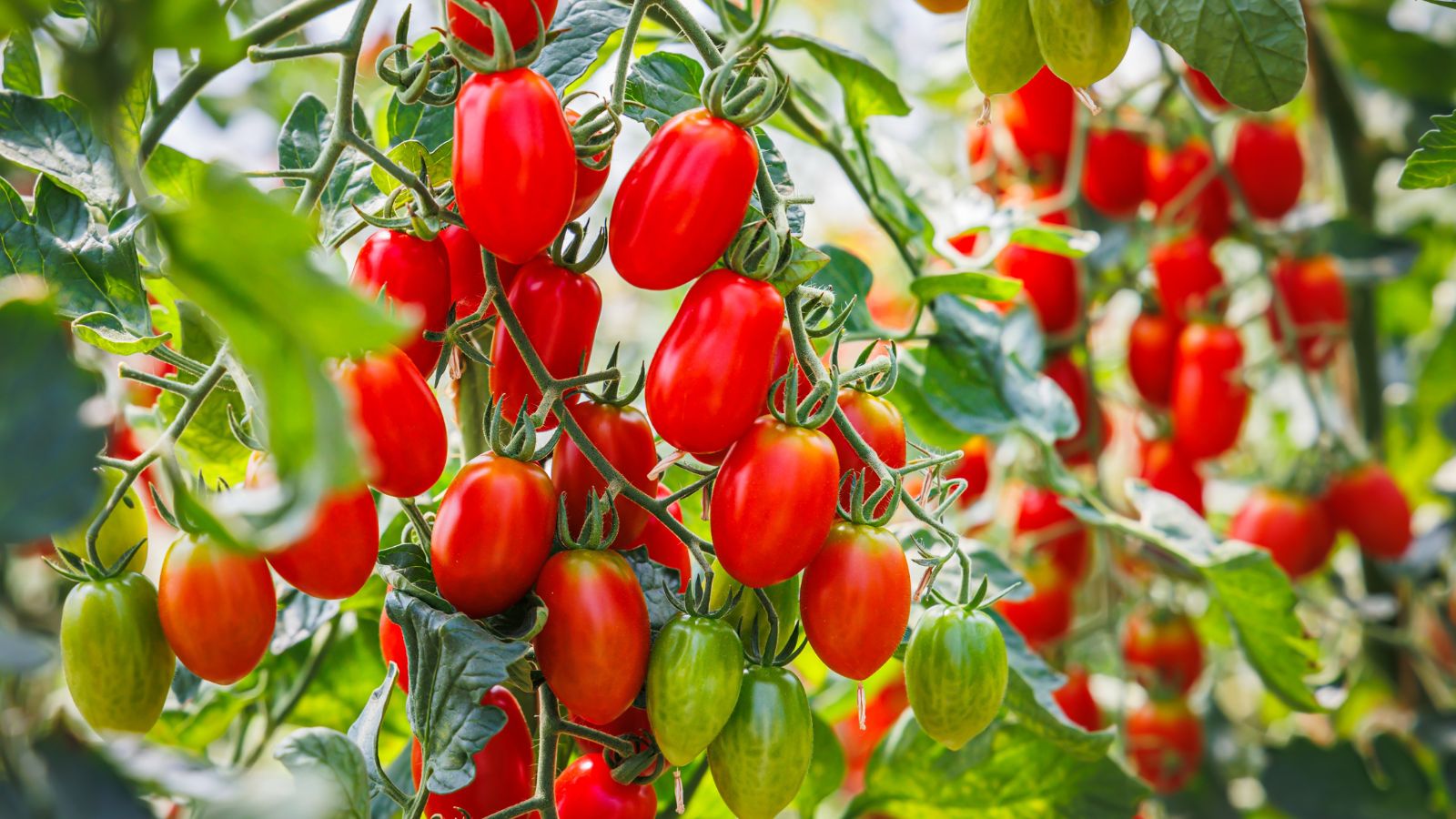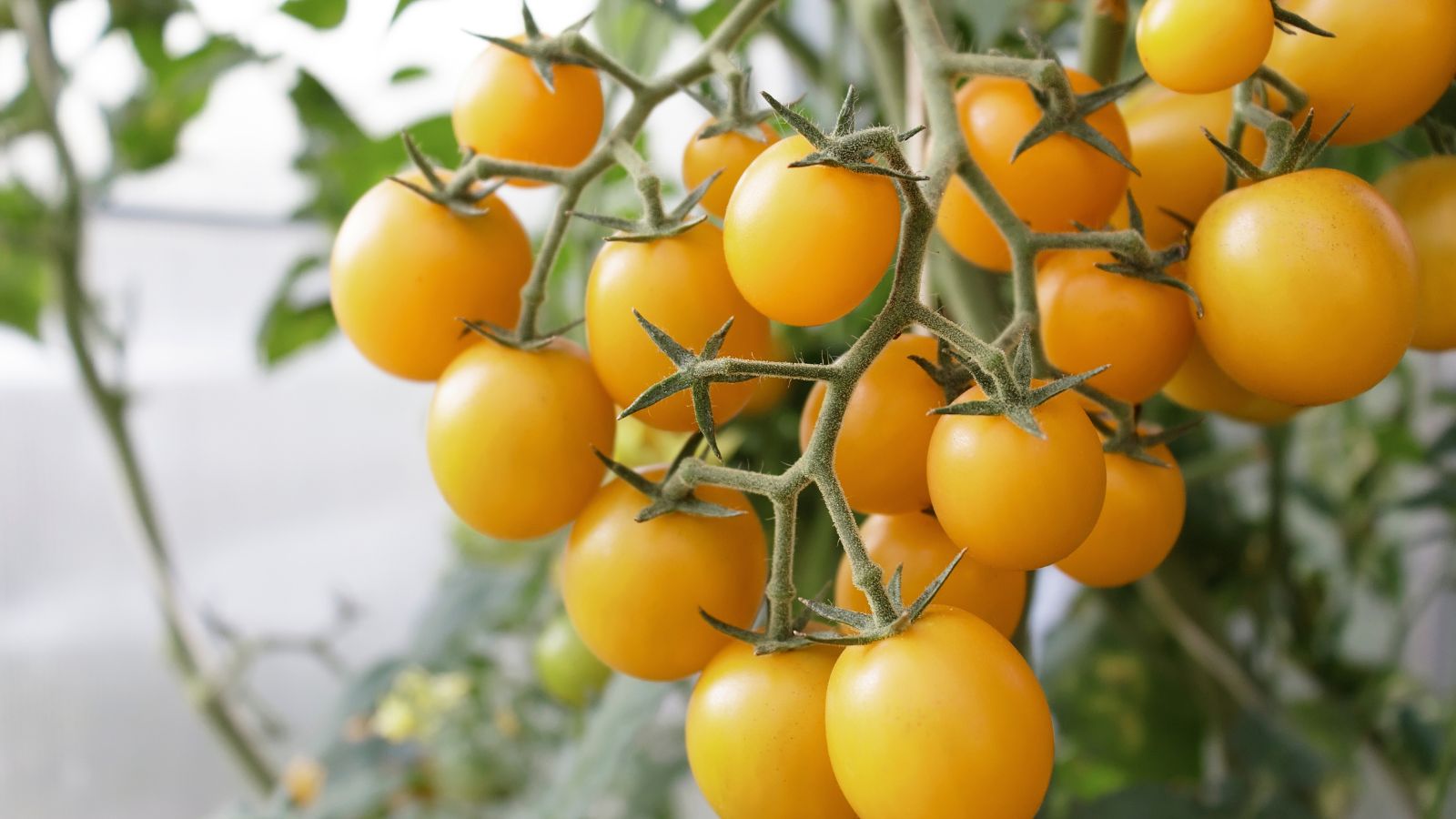9 Rock Garden Mistakes to Avoid This Year

A rock garden is just as it sounds—a garden full of rocks! These spaces mimic mountainsides with rocky crags and outcrops. The unique setup of a rock garden allows it to house alpine plants, rugged perennials, and drought-tolerant shrubs.
Whether you live in Maine, Kansas, or California, you can create the rocky space of your dreams. Some simple approaches will set you up for success regardless of where you live. Thoughtful planning and consistent maintenance ensure the space looks its best year-round, no matter how hot or cold it gets.
Choose the right plants and avoid the following mistakes with your rock garden so you can enjoy low-maintenance landscaping for years to come.
Sparkle Blend Iceplant


Sparkle Blend Iceplant Seeds
McKana Giant Blend Columbine


McKana Giants Blend Columbine Seeds
Colorado Blend Yarrow


Colorado Blend Yarrow Seeds
9 Rock Garden Mistakes
For a healthy and stunning garden, avoid these nine mistakes when setting up and maintaining a rock garden. Do not fret if you have made these mistakes, as there are ways to resolve them for future growing success.
Planning Poorly


Planning and designing a rockery are the two most important steps in creating a perfect garden. You’ll need a proper growing site first before you can plant plants or situate rocks. Hillsides, slopes, and open meadows are some of the best spots, though anywhere with plenty of sunshine will do. Avoid sites with poor drainage or standing water.
Aside from choosing a location, consider grading the area and setting it up for the boulders. As water falls from sprinklers or rain clouds, it moves the soil, pushing dirt in new directions. You’ll want to situate the boulders so that water doesn’t erode the soil. Try to create channels that divert water between the stones to prevent erosion.
Drainage is important in minimizing erosion. A poorly draining site will overflow with water, and it’ll wash the dirt down slopes and channels. If the soil is soggy or dense, amending it can help it reach an optimal composition. Amend clay or sand with compost; mix a layer two to three inches thick into the soil surface, then place the boulders and pebbles on top.
If you’re adding dirt to the area, try using an equal blend of these three soil components:
- ⅓ Pumice, perlite, or vermiculite
- ⅓ Compost or leaf mold
- ⅓ Native soil
The equal mix creates a blend that’s free-draining, porous, and partially fertile. It’ll work perfectly for alpine species and sun-loving specimens.
Growing in the Shade


It is a mistake to combine shade gardens and rock gardens because most shade-loving plants enjoy moisture, while rock-loving desert or alpine plants appreciate full sun. You’ll need an open site with full sun, meaning there are more than six hours of daily direct sunlight. Though you can create a shady rock garden if you’d like to, you’ll have the most success when you choose a space with full sun.
Most alpine plants grow without shade or tree cover, meaning they need lots of direct sunlight in the garden. Partial shade, with between three and six hours of daily direct sunlight, may also work well, though you’ll want to choose shade-loving plants instead of mountain-dwelling or sun-loving ones.
If there are trees overhead, use pruners or trimmers to lop the branches off. This increases the amount of light that reaches the ground below. South-facing sides of the house are ideal, as they receive more sunlight than the other sides.
Not Balancing Design Elements


Art and science are equally important when creating rockeries! Drainage and setting up the site are important tasks, but so too are designing and planning. A balance of hardscape materials, living plants, and other features will create a pleasing garden that’s wonderful to look at and walk through.
Adding too many boulders and not enough plants, or vice versa, leads to unattractive gardens with little curb appeal. You want a healthy balance of small pebbles, large rocks, and green plants. When setting up, look at your site up close and far away to see whether it’s balanced or not.
The exact combination is entirely up to you. It’s your yard, and you know best how you want it to look! An easy rule to guide you is the rule of three: use groupings of three to create natural, wild looks. This will help you create organic designs that mimic nature.
Planting the Wrong Plants


Picking the right plant for the right spot will lead to the success of your rockery. There is no such thing as an impossible growing site. For rock gardens, sun-loving plants are best. Perennials that form mounds or mats work well, as they coat bare rocks with texture and color from their leaves and flowers.
Dozens of microclimates exist in rockeries. Spaces between boulders, exposed rockfaces, and crevices all have different features that influence their conditions. Cracks and crevices offer cool shade for roots, while rockfaces provide a steady source of heat for desert cacti and succulent plants.
These are some of the many plant types you can choose from:
| Succulent Spreaders | Delosperma Sedum Sempervivum |
| Upright Perennials | Achillea Aquilegia Campanula Salvia |
| Hardy Bulbs | Camassia Crocus Narcissus Tulipa |
| Woody Shrubs | Calluna Cistus Hebe Teucrium |
Trees are generally not included in rock gardens, as they form dense shade with their dense, leafy canopies. Though large trees aren’t ideal, small dwarf types are. Use dwarf Japanese maples, conifers, and hollies.
Choosing More Than One Rock Type


Rocks form from a variety of natural processes. Because like-typed rocks form in the same areas, you’ll want to use one or two similar rock types in your garden. Avoid laying different boulders of various materials, as it’ll create a scene with clashing colors and textures. Using a single type is key to creating a cohesive, naturalistic design that’s pleasing to the eye.
Which rocks to use depends on where you live and what’s available nearby. Landscaping and garden supply stores often carry an assortment of boulders, rocks, and pebbles from various sources. Glacier green slabs are my favorite; they consist of green and white quartzite. You should use whichever type you fancy.
If you’re looking to emulate a nearby wild landscape, source a single rock type that matches local ones. You can also emulate rockeries from other areas by using rocks that look like the ones in those regions.
Leaving the Soil Bare


It is always a mistake to garden with naked soil, especially in a rock garden. Bare soil is never good for plants, nor is it ideal for beneficial soil-dwelling organisms. Hot temperatures and direct sunlight zap the ground in summer, creating harsh conditions. Just as it’s important to cover bare soil in garden beds, so too is it important to mulch exposed ground in rock gardens.
To fit the look of a rockery, you’ll want to avoid compost, wood, or straw-based mulches. Instead, opt for pebbles, gravel, or smooth stones. Using these materials fits the look of a rock garden. They’ll help you create a visually appealing design while also acting as beneficial mulch in the space.
The same places that sell large boulders also tend to carry smaller stones. Many supply stores offer bulk bins that you buy by weight. Simply bring a bucket or truck bed, fill it up, and pay for the cost of the material. This is the best bang for your buck!
Forgetting to Pull Weeds


Rockeries require annual maintenance and cleanup to keep them looking wild yet decorative. Wildness does not equate to letting weeds go rampant on the site! Rock cracks, crevices, and exposed soil provide ample opportunities for weed seeds to sprout.
You can keep weeds in check by weeding regularly. Mulching with pebbles helps, though it doesn’t stop weeds from growing entirely. It’s best to walk the garden once a week or two to spot sprouting seedlings. Pull them when they’re young and they’ll easily uproot from the ground.
If weeds are going to seed, it’s easier to chop off their flowers and seeds than it is to pull them. Stopping weeds from seeding will effectively control future population growth. Pick the seed heads off with your fingers, or crimp the stems with your feet to prevent the tops from maturing.
Underwatering


Water levels are significant in rockeries, as they are for lawns, raised beds, and containers. Established gardens thrive without extra irrigation, while new plantings need some water to establish themselves well. If you planted a new rockery in the past year or two, it’ll need irrigation this spring and summer.
The first year after planting a new site is the most important. You’ll want to water every few weeks when the top layer of soil dries and crusts. Don’t let the space go bone dry. On the flip side, you don’t want it soggy or wet either.
In the second year after planting, the plants will need water during heat waves and long droughts. They’ll need less moisture than they did in their first year, though they still need some help to make it through the summer.
Third-year plantings rarely require extra irrigation, as the plants should have grown drought and heat-resistant by now. If they’re not, you may want to reconsider which plant species you’re using on the site. Choose native alpine specimens and tough, rugged perennials from harsh climates.
Overwatering


Overwatering, like underwatering, can create issues in the rockery. The plant species need irrigation in their first and second years, though they rarely need extra moisture after the third year. Overwatering them will lead to slow growth, yellow leaves, and rotting roots.
Occasionally, some water may help the roots if conditions are especially dry, hot, or sunny. Your plants are the best indicators of soil moisture; they’ll look limp, shriveled, and weak when they’re thirsty.
Full sun is key to regulating moisture. Shady sites will evaporate moisture more slowly than sunny ones, leading to consistently moist conditions. If your rockery is in partial shade, consider choosing shade-loving plant specimens that’ll survive if the soil gets too wet.
Frequently Asked Questions
It is a collection of rocks, boulders, and plants. Combining these living and nonliving elements creates a cohesive, natural environment that mimics mountainous regions
Yes, they can! I recommend dividing the peonies every few years to limit their spread. They may overrun areas of the garden if they’re left to spread.
Start by raking or pushing back mulch, then dig a hole as deep and twice as wide as the plant’s rootball. Situate the plant in the hole, cover its roots with soil, then add the mulch back on top of the ground.




